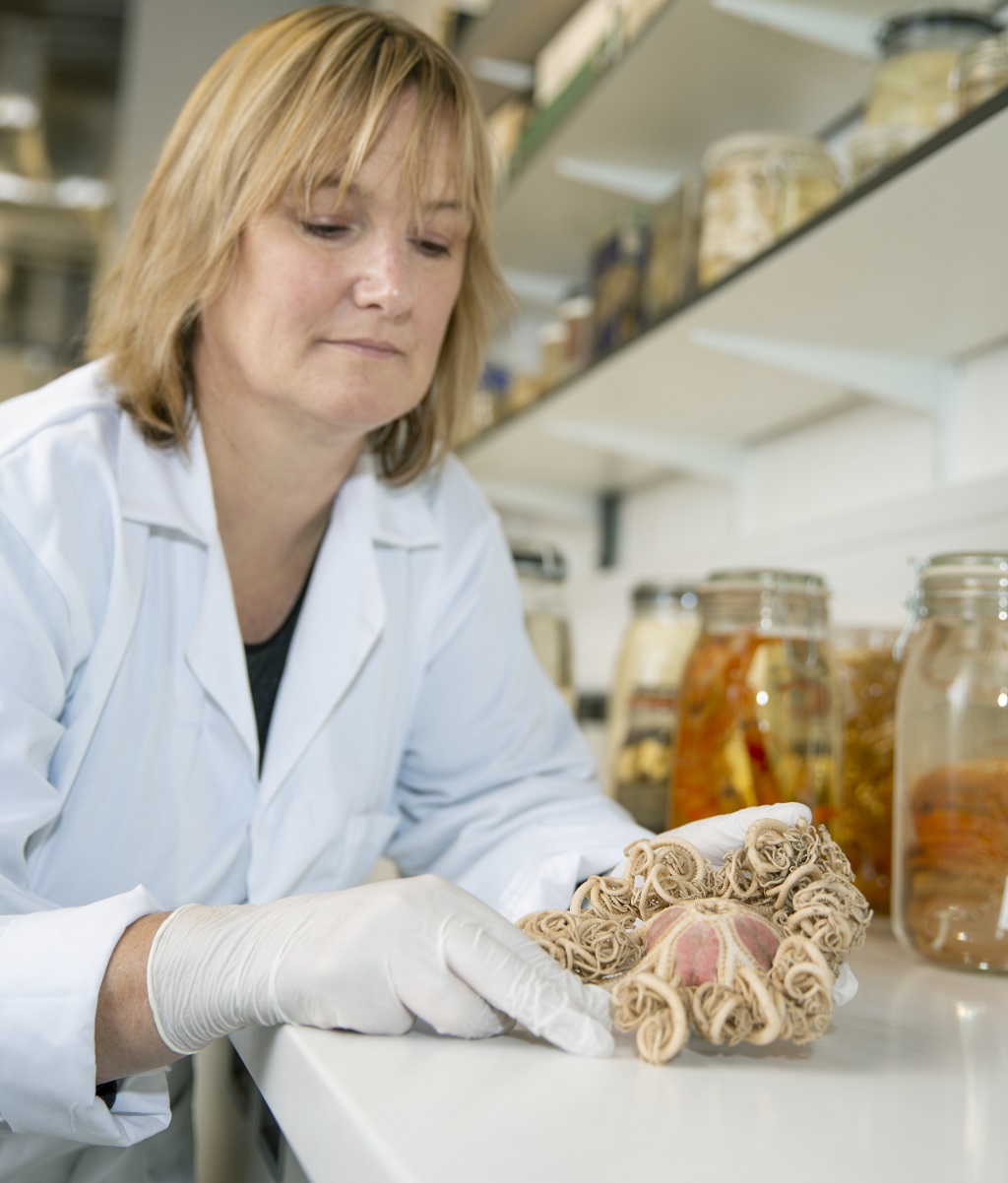To celebrate Visit Scotland’s Year of Coasts and Waters, a new display will highlight the unique beauty and significance of Scotland’s marine life.
Open now, and running until Friday 28 June, Scotland’s Precious Seas reflects the diversity of National Museums Scotland’s research collections. From flame shells to whale skulls, the range of preserved specimens on display can help measure the effects of human activities – including accelerated global climate change – on life in Scottish seas.
Scotland’s seas cover an area six times the size of its land mass and its coasts stretch for 18,672km. Its waters contain more than 46,500 known species with new discoveries being made all the time. From its complex shores the seabed plunges from shallow seas less than 20m deep to more than 2km deep, where enormous seamounts hidden under the sea dwarf Scotland’s highest mountains.
The impact of rising sea levels, global climate change and pollution on the country’s marine life are themes at the heart of the display. Scotland’s waters are changing – strandings records demonstrate fewer white-sided dolphins in Scottish waters as they move northwards to colder climes.
On display is the skull of a striped dolphin first recorded in Scotland in 1988. Usually found in warmer seas, this is one example of a number of cetaceans moving into Scotland’s warmer waters in recent years.
Scientists from National Museums work with the Scottish Marine Animal Strandings Scheme to investigate patterns of strandings and carry out post-mortems on the animals. Hundreds of whales, dolphins, porpoises, seals, marine turtles and basking sharks are stranded on Scotland’s coasts every year. Most of these marine animals are top predators, and studying them can help us understand the health of our seas.
A Cuvier’s beaked whale was found stranded on Skye in 2015 – a post-mortem found that four kilograms of plastic waste in its stomach was the cause of death. Plastic bags retrieved from the whale are on display highlighting the threat posed by marine pollution.
Skulls of seabirds are displayed that were killed during the Braer oil spill in 1993. An extensive programme of post mortem examinations was carried out at the University of Edinburgh and National Museums on around 1,500 birds recovered after the event.
Dr Andrew Kitchener, principal curator of vertebrates at National Museums Scotland said: ‘Our marine collections are a vital resource at a time when our seas face threats from global climate change, marine pollution and other effects of human activities. These issues are a subject of increasing focus from National Museums Scotland as we look to further inform and engage the public through our collections.’

National Museums Scotland curator of Invertebrate Biology Fiona Ware, with one of her specimens (Photo: National Museums Scotland)
Specimens on display show the beauty and fragility of Scotland’s waters and highlight the threats posed to delicate ecosystems. Beautiful flame shells feature – bright orange salt-water molluscs which combine to form dense beds that provide a habitat for all sorts of life. These beds are threatened by fishing practices – in 2017 a scallop dredger caused extensive and significant damage in Loch Carron which resulted in the Scottish Government declaring it an Emergency Marine Protected Area.
Continuing studies help monitor the health of the sea’s ecosystems. Every two years Marine Scotland Science surveys the deep waters overlying the continental slope to the west of the Outer Hebrides. Animal specimens from the 2019 survey, including examples of basket star, deep sea barnacle, bamboo coral and rabbit ratfish, are exhibited giving a rare glimpse of the diversity of life 500–2000 metres below the waves. Monitoring the fauna can give insights into how activities in the area – such as fishing – are impacting on marine life.
Fiona Ware, curator of invertebrate biology at National Museums Scotland, added: ‘Scotland’s Precious Seas showcases the beauty and diversity of our waters along with the breadth of National Museums Scotland’s marine collections. The display provides insights into the valuable research taking place in our waters and how this will aid conservation efforts in years to come.’
Thanks to research and protective measures, Scotland’s seas and coasts are mostly in good health, but some threats have local impacts or may cause wider problems in the future. Scotland’s Precious Seas introduces the valuable research being carried out in marine environments that will allow scientists to detect when problems arise and provide solutions to deal with them effectively.
For more details visit nms.ac.uk/sea
TAGS

